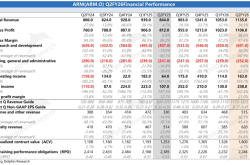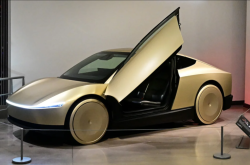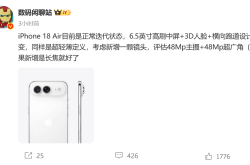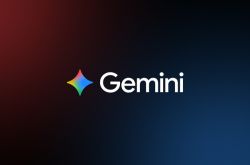Trump Card's Leadership Transition: Navigating a Long and Challenging Path Ahead
![]() 06/19 2025
06/19 2025
![]() 434
434
The Time Has Come for a Comprehensive Overhaul of GAC Trump Card's Autonomy Strategy
Main Text
Recently, GAC Trump Card has finally garnered some much-needed attention.
CCTV dedicated a special live broadcast to the Trump Card M8, spotlighting the collaboration between GAC Trump Card, Huawei Kunlun, and CATL.
However, the timing of this promotion may be too little, too late to significantly boost Trump Card's sales.
Internally, GAC had already recognized the gravity of the situation.
On the 15th of last month, GAC Trump Card quietly underwent a leadership change, with Feng Xingya stepping down as chairman and Ge Xianqing taking the helm.
This shift signifies GAC Trump Card's desperate attempt to recover from a comprehensive transformation failure.
Data reveals that from January to May 2025, Trump Card's cumulative sales plummeted by roughly 25%, with a nearly 30% year-on-year decline in May, making it the GAC Group brand with the most significant decline.
The harsh reality is that this autonomous brand, once aiming for "one million sales," now faces an existential crisis.
Today, let's delve into the situation at GAC Trump Card.
I. Trump Card's Decline: A Data-Driven Perspective
Let's begin with the numbers.
In 2024, Trump Card's sales increased by 2%, but sales revenue dropped by nearly 6%, marking the failure of its 2025 strategy to prioritize volume over price.
In the first quarter of this year, Trump Card's market share continued to erode, slipping to 3.2%, and falling to 9th place among autonomous brands.
Industry insiders can likely deduce that the issue lies with new energy vehicles.
Indeed, it does.
Trump Card's new energy penetration rate stands at just 35%, compared to the industry average of 42%, indicating that its new energy transition has not been successful to date.
This failed transition has plunged Trump Card into a vicious cycle: investment, failed transition, substantial losses, reduced investment, and further failure.
Take intelligent driving as an example; it has nearly reached the bottom of the industry.
Currently, Trump Card's adoption rate of L2+ intelligent driving systems is below the industry average, with complaints about lagging smart experience and interaction accounting for over 30%.
To address this, Trump Card launched the "Yearning S7" equipped with the Momenta system, hoping to compensate for some shortcomings.
However, it is evident that unless a structural transformation occurs, even Huawei's involvement may not save Trump Card.
II. Identifying Structural Issues
Trump Card exemplifies the classic case of "getting up early but arriving late."
Trump Card established its new energy company as early as 2015, and the pure electric SUV Trump Card GE3 launched then enjoyed decent sales. However, after the AION brand was spun off in 2018, Trump Card was confined to being a "hybrid-exclusive brand," missing out on the pure electric window period.
What about the hybrid sector?
Trump Card neither delved deeply into plug-in hybrids to reduce costs like BYD nor followed Lixiang's lead in focusing on range extension scenario innovation. It only released the EV+ platform and iGTEC 2.0 intelligent power technology in 2024, while BYD's e-platform 3.0 and Geely's SEA architecture have undergone multiple iterations.
Given the rapid evolution of new energy technologies, it's no surprise that Trump Card has fallen behind.
Moreover, Trump Card's brand has encountered challenges.
MPVs account for an abnormally high proportion of Trump Card's sales, approaching half, reinforcing the brand's identity as a "professional commercial vehicle." This has resulted in a household market penetration rate of less than 15% and further brand aging.
Certainly, GAC Group also bears responsibility for Trump Card's predicament.
The group's three major brands—Trump Card, AION, and Hyperion—constantly compete for resources and create internal friction.
For instance, at the beginning of 2025, GAC Group attempted to merge the R&D teams of the three brands into the GAC Research Institute for unified management. However, just three months later, the teams were re-split, hindering the sharing of technical advancements.
Another example is the Hyperion HL model, which initially needed to utilize Trump Card's MPV platform technology but was impeded by the separated teams.
Coupled with the sharp decline in sales of profitable joint venture vehicles, the group's cash flow has shrunk, ultimately halving Trump Card's R&D budget.
Trump Card faces numerous challenges indeed.
III. Ge Xianqing's Life-or-Death Mission: A 12-Month Opportunity Window
As the chairman of GAC Toyota and head of strategic development, Ge Xianqing brings extensive experience to the table.
However, whether he can break through the constraints of a state-owned enterprise remains to be seen.
Nevertheless, there is a glimmer of hope for Trump Card to break the deadlock, though time is of the essence. If Trump Card can capitalize on the following two points this year, it may still have a fighting chance.
First, there's Trump Card's collaboration with Huawei.
This collaboration holds significant strategic importance for Trump Card: the newly established HuaWang Automobile (GH project) focuses on implementing Huawei technology, which could provide substantial technical support and brand momentum to Trump Card. If Trump Card can seize this opportunity and create a popular model, it may revitalize the brand. Second, Trump Card must steadfastly implement its transformation strategy.
It's undeniable that Trump Card has accumulated technology in the new energy field. Although it lags in the pure electric sector, it still has solid technical foundations in the hybrid sector. If it can continue to invest firmly and achieve a cost breakthrough for the EV+ platform, it could mark a significant turnaround.
This year is pivotal for many brands.
Regarding the overall environment, China's new energy penetration rate has surpassed 42%, and the market share of leading brands is concentrating at a rate of 2% per month.
How Ge Xianqing will revive this fallen giant in this high-stakes race for new energy dominance remains to be seen. We can only wait and watch the outcome unfold.








